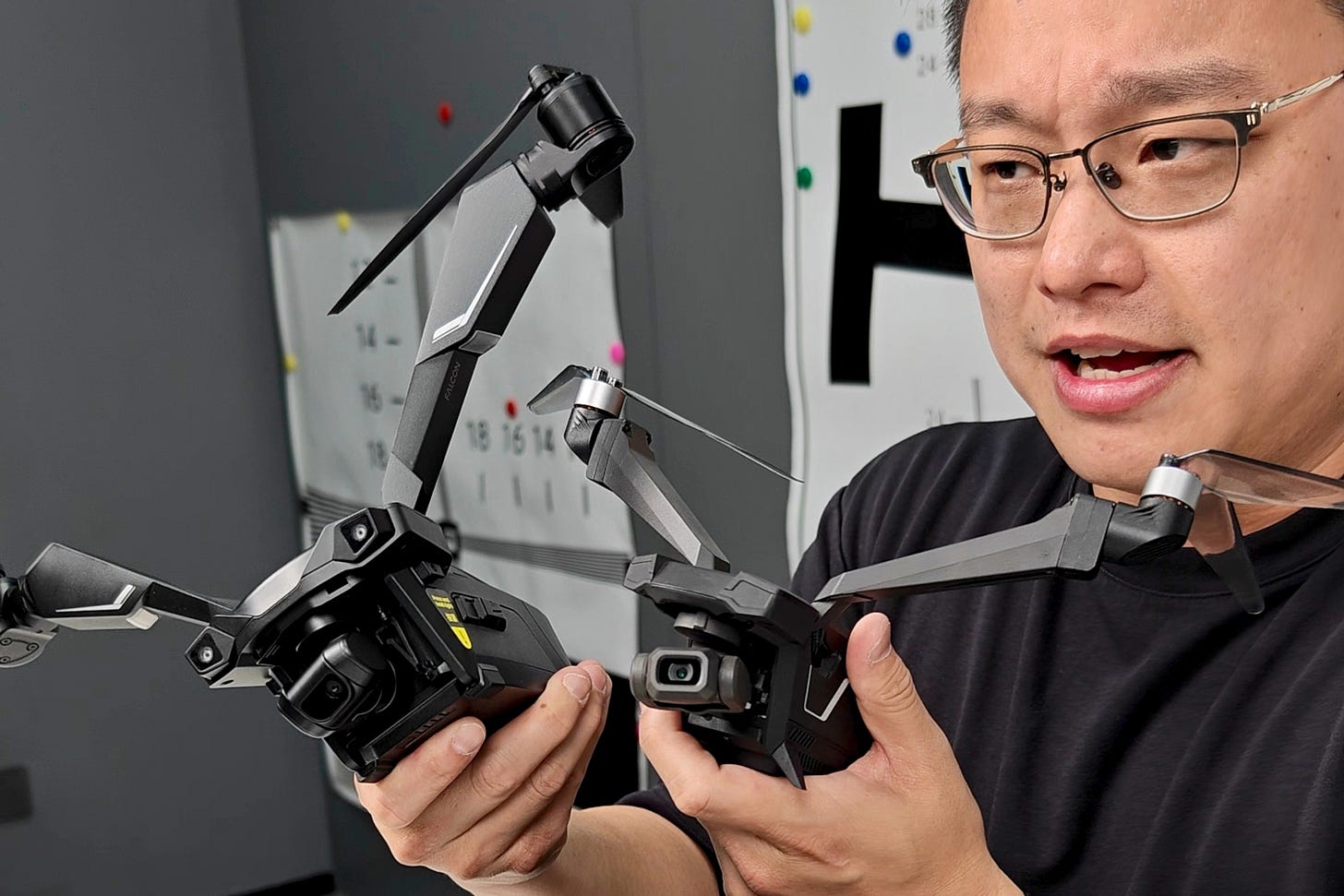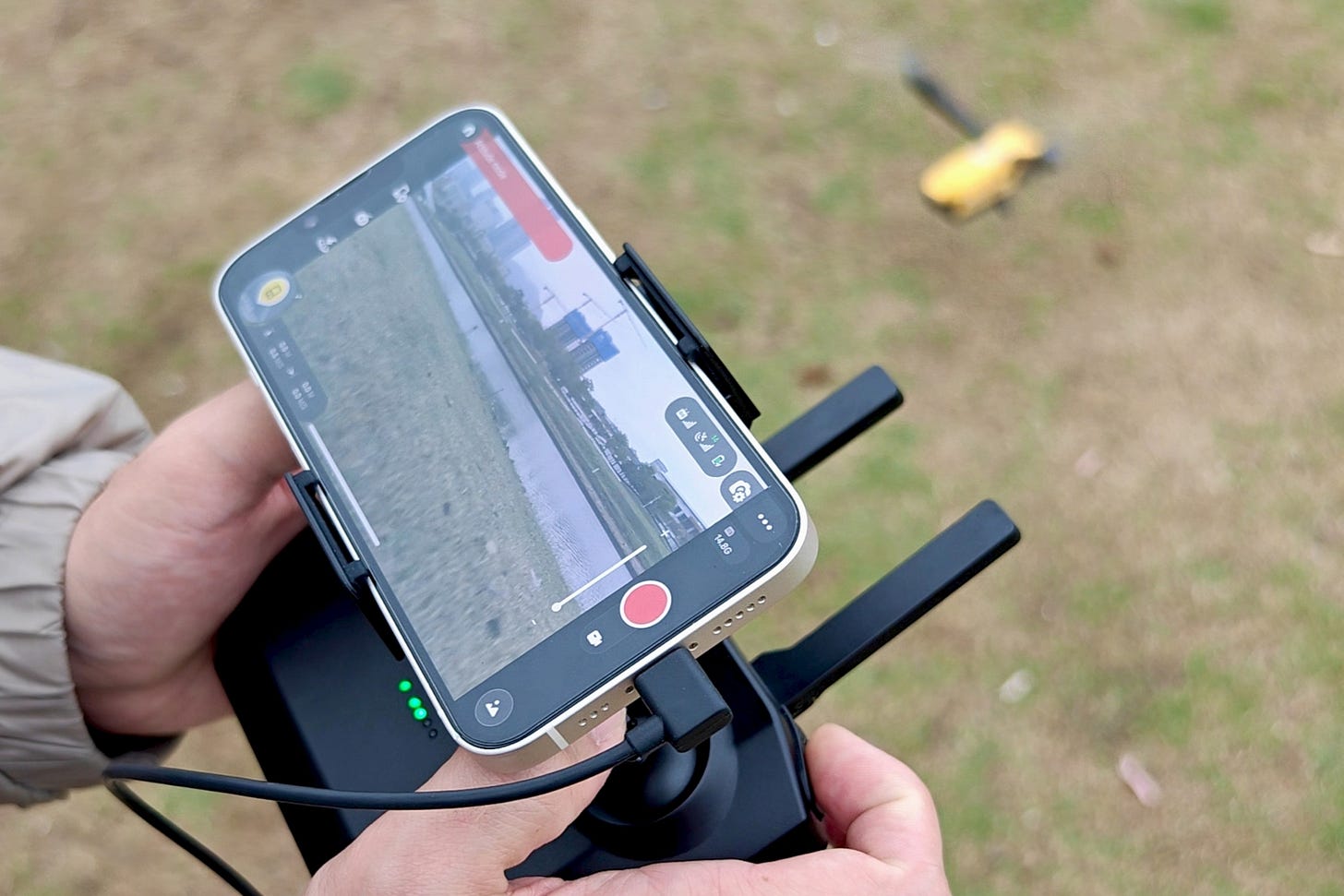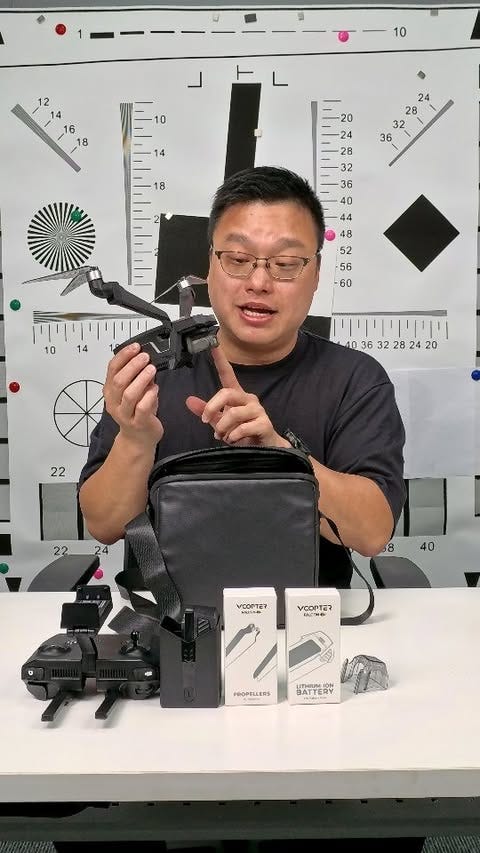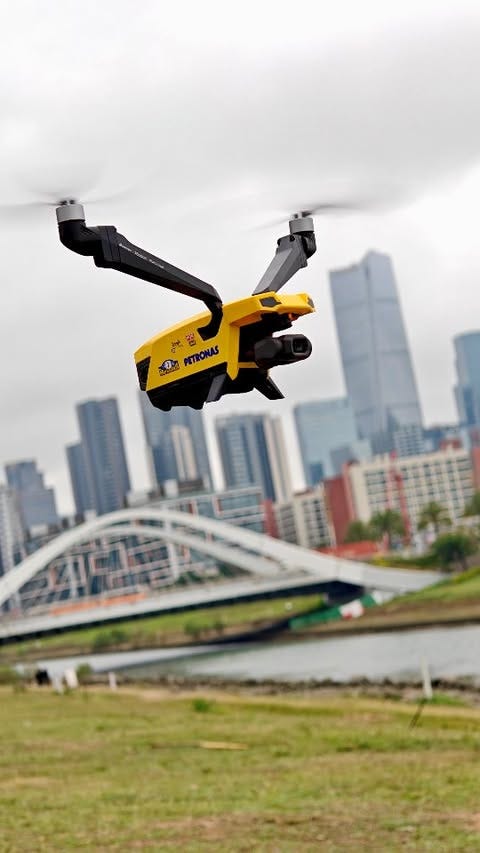This V-shaped bi-copter drone is surprisingly light and quiet
The V-Copter Falcon Mini starts at $199 on Indiegogo.
Zero Zero Robotics, the company behind the nifty HoverAir foldable caged drones, has launched the V-Copter Falcon Mini as a crowdfunding campaign on Indiegogo. This is the world's first V-shaped bi-copter drone that weighs under 250 grams, meaning no registration is necessary in most countries (except for Japan, which has a stricter threshold of 100 grams).
Some may immediately recognize this new machine as the spiritual successor to the V-Coptr Falcon from five years ago (and yes, the sub-brand nixed the “e” back then). While this 760-gram device did impress with a 50-minute flight time, it was too costly to make and was barely profitable even with a $999 retail price.
In the end, only 5,000 units were made, but at least the company proved that a bi-copter design does contribute to power efficiency. “Nature rewards simplicity and elegance; most flying birds in nature do only have two wings,” Zero Zero Robotics co-founder and CEO MQ Wang told me. And of course, the V shape offers a much needed differentiation in the slowing drone market.
This brings us back to present day, in which the new V-Copter Falcon Mini offers a flight time of up to 34 minutes. That’s 3 minutes longer than the DJI Mini 4K in the same class. I was invited to an exclusive preview of the Falcon Mini in Shenzhen (where I also did the world’s first unboxing of it), and what awed me more was how quiet this new drone was, even when it was whizzing around the river bank at a top speed of 17 m/s (38 mph) in turbo mode. I almost couldn’t keep up with my camera. Thankfully, the top speed in normal mode is capped at a more manageable 6 m/s (13.5 mph).
The Falcon Mini’s agility is also contributed by its tilt-rotor control system, with each rotor offering an impressive 0.01° angle precision. This is backed by a handy remote controller with a radio range of 2.4km (1.5 miles), and its built-in clamp turns your smartphone into a viewfinder.
The Falcon Mini carries a 12-megapixel camera on a 3-axis gimbal, and it’s capable of capturing video at up to 4K at 30fps, or at a smoother 60fps when set at lower resolutions — 2,688 x 1,515 or 2,048 x 1,080. When not in use, you can cover the camera with a transparent guard.
Compared to the chunkier Falcon, the Falcon Mini does miss out on the two extra front-facing eyes. This sadly means it lacks obstacle avoidance and follow modes, but it is positioned as an entry-level product, after all. If these two features are a must, you may want to consider the higher-end HoverAir X1 Pro and ProMax instead, which also offer stronger wind resistance and higher altitude.
To make full use of the Falcon Mini’s agility, Zero Zero Robotics added one more trick here: reverse flight mode. You’ll have to install the propellers the other way round, then snap the reverse fly kit onto the arms, and you’ll be able to make the drone gracefully dance around like an ice skater. I didn’t try this myself in case of breaking any prototype (I do have a track record…), but I thoroughly enjoyed watching the quick demos. I can see how such a feature would make this drone even more fun, and perhaps enabling a new type of competition amongst drone pilots, too.
The V-Copter Falcon Mini is now live on Indiegogo, with a launch day special deal for the single battery kit starting from just $199 (100 units only), after which it’ll go up to $249 for the super early bird deal (also 100 units only). There’s also a $369 “Fly More Combo” package, which includes 3 batteries, a dual-battery charging hub, plus a carry bag. Shipping will begin in early summer.
The reverse fly kit is included in all the SKUs in the Indiegogo campaign, though it’s unclear if it’ll be part of the final retail packages.








